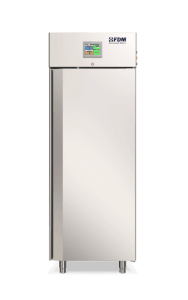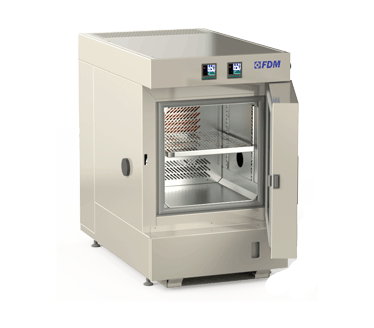
On these pages we often discuss the risks run by materials and products exposed to ordinary atmospheres. Among these are the effects of temperature, humidity, rainfall and solar radiation.
But not all atmospheres are ordinary. Some are explosive.
Appliances that have to operate in potentially explosive atmospheres must pass rigorous tests in explosion-proof chambers.
What is the Explosion Proof Chamber for?
Let's start with the basics: what is an explosion?
We all know it, but would we be able to define it precisely?
The technical definition for our sector can be found in the ISO 8421-1:1987 standard which deals with the vocabulary of phenomena having to do with fire. An explosion is defined as "a sudden oxidation or decomposition reaction with an increase in temperature, pressure, or both at the same time".
It is a chemical reaction that needs three elements to happen: oxygen (air), a flammable material and a source of ignition.
The Explosion Proof Chamber performs a fundamental test for all products that have to work in potentially explosive atmospheres, acting as a source of ignition within the triangle.
Let's see which ones.
Perform
Climate Stress
Discover the new series of Climate Chambers for controlled climate testing
Which industries are affected by the Explosion-Proof Chamber Test?
Industries that are affected by the explosion-proof chamber test must have potentially explosive atmospheres.
All work environments in which a potentially explosive atmosphere is created - i.e. including oxygen, flammable materials and sources of ignition - must comply with the relevant ATEX directives, among which there is the explosion-proof chamber test for all ignition sources.
We will soon talk about the ATEX directives, for now we indicate which activities and sectors are involved:
- chemical and metallurgical industry
- disposal industry
- energy production
- construction Engineering
- varnishing
- agriculture
All of these sectors have explosive atmospheres and above all machinery that must be tested in an explosion-proof chamber as they are potential sources of ignition.
What are the Explosion Proof Standards?
As we have anticipated, the set of European Union directives for the regulation of equipment intended for use in areas at risk of explosion are called ATEX.
ATEX performs two main classifications: one relating to areas at risk of explosion and one relating to machinery and devices that can act as an ignition source.
Explosion-proof chamber tests on these are outlined by UL 1203, IEC 60079-1:2014 and CSA C22.2 NO. 30.
You cannot find the ideal chamber for your test?
Create your own environment, according to any test requirement
The FDM Explosion-Proof Climatic Chamber
What do climatic chambers have to do with all this?
With regard to the ATEX directives, the climatic chambers are involved in two distinct aspects.
On the one hand, explosion-proof test chambers are climatic chambers, often of the walk-in type for testing sizable machinery.
On the other hand, all climatic chambers are both potentially explosive environments and potential sources of ignition. For this reason, each climatic chamber must have Atex certification as an explosion-proof cabinet.
All FDM climatic chambers have ATEX certification and we have talked about it in detail here.
For further doubts and questions, please do not hesitate to contact us.
Would you like to receive a quote or do you have questions about the product?
Contact us to receive more information about this Product.



